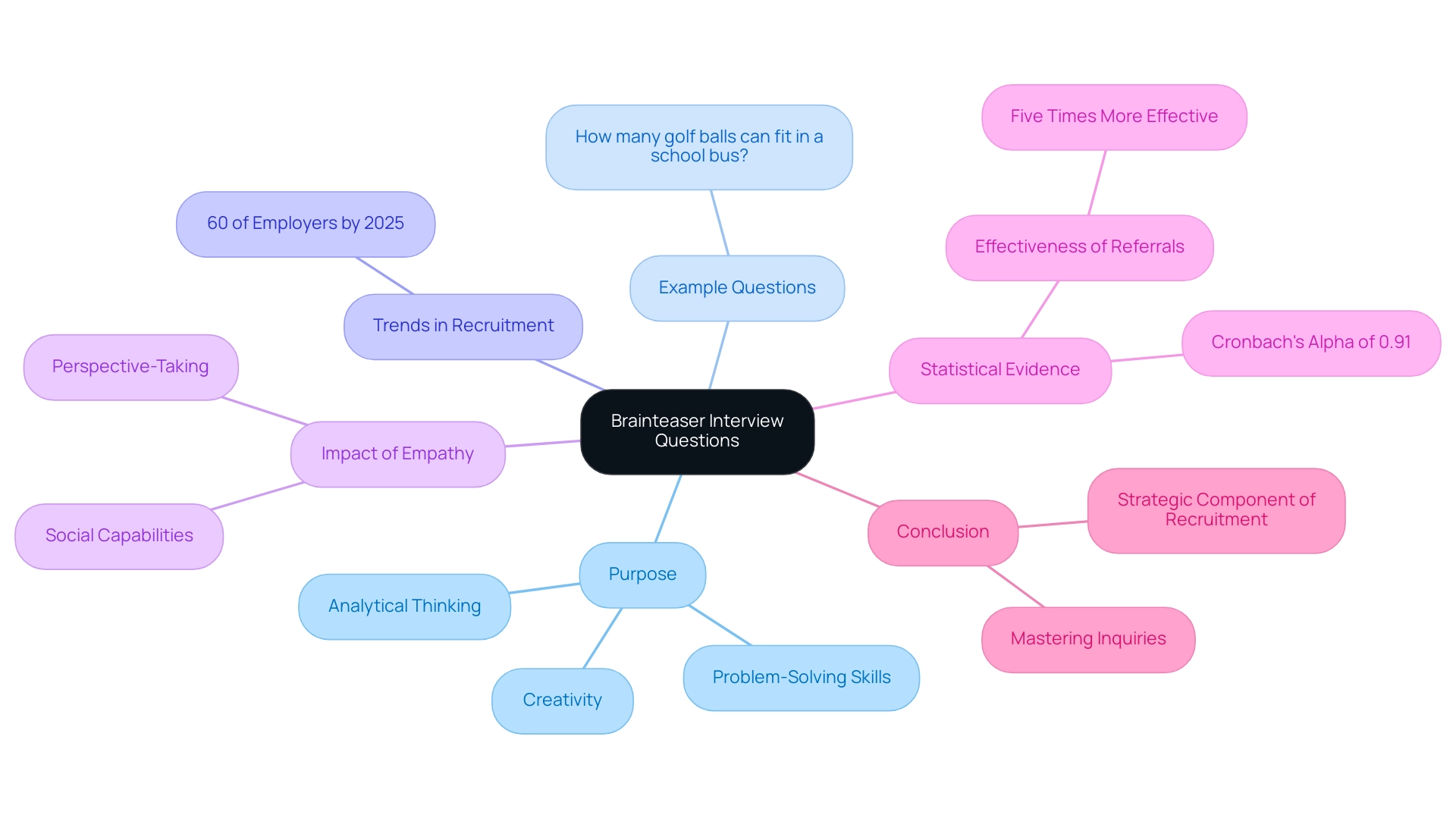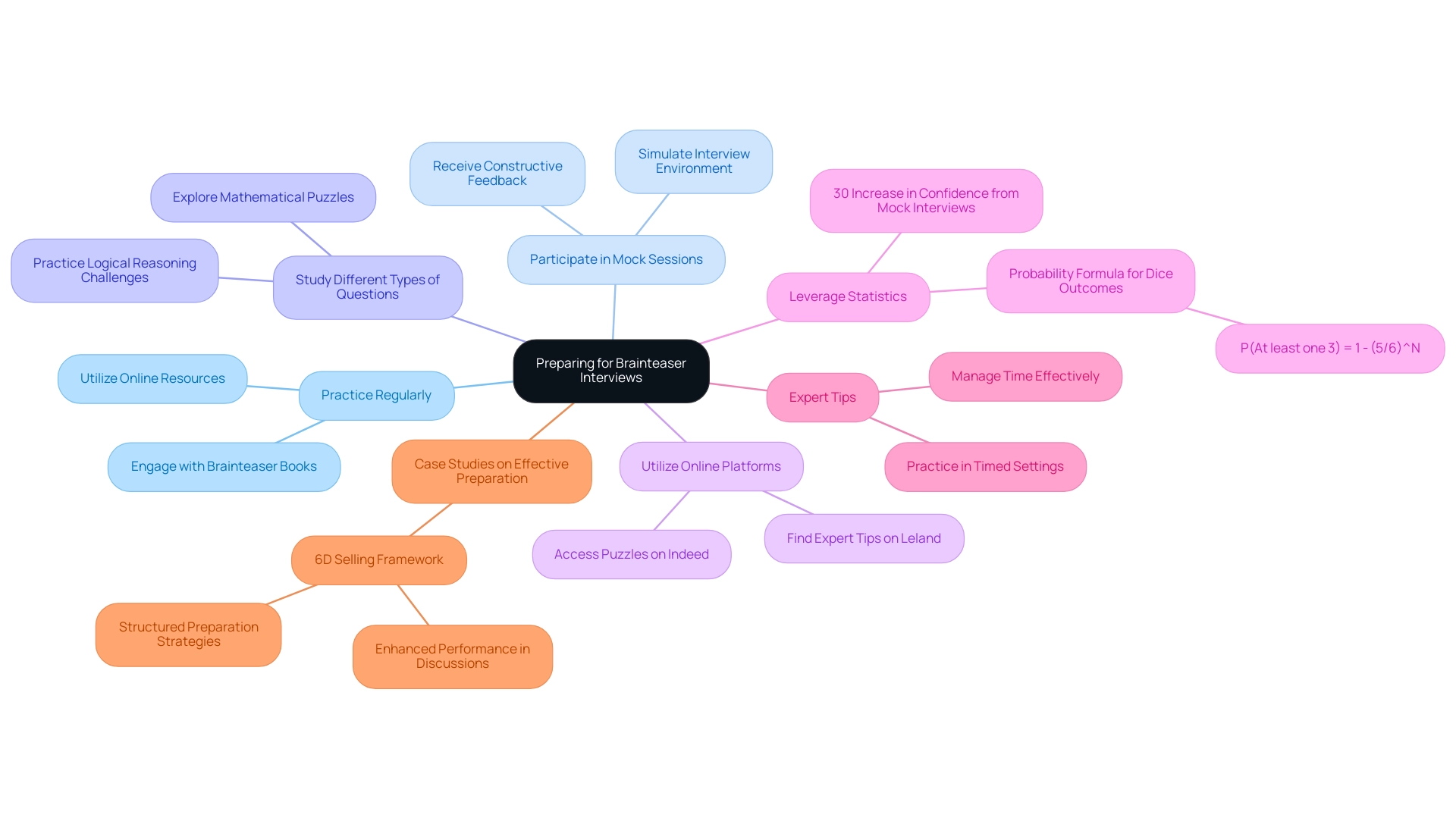
Brainteaser interview questions have surged in popularity among employers, serving as a powerful tool to assess candidates' problem-solving abilities, creativity, and communication skills under pressure. These questions compel applicants to engage in critical and logical thinking, demonstrating their potential to navigate complex challenges. Statistics reveal a notable increase in their application within hiring processes, underscoring their strategic significance in contemporary recruitment practices. Employers who embrace these innovative assessments position themselves to identify top talent effectively.
In the competitive landscape of job interviews, brainteaser questions have emerged as a powerful tool for employers seeking to evaluate candidates beyond their resumes. These intriguing puzzles not only assess problem-solving abilities and analytical thinking but also reveal a candidate's creativity and communication skills under pressure.
As an increasing number of employers incorporate brainteasers into their hiring processes, understanding their purpose and mastering the art of responding to them has never been more crucial.
This article delves into the significance of brainteaser questions, the various types candidates might encounter, and effective strategies to navigate these challenges. By providing insights that empower job seekers to excel in their interviews, we aim to equip you with the knowledge necessary to stand out in a competitive job market.
Brainteaser interview questions are essential for evaluating an applicant's problem-solving skills, creativity, and analytical thinking. These inquiries often present puzzles or hypothetical scenarios that demand logical reasoning and innovative thought processes to arrive at a solution. Understanding the fundamental purpose of these questions is critical; they are not merely tests of knowledge but assessments of how individuals approach complex challenges under pressure.
Consider, for instance, a common puzzle: 'How many golf balls can fit in a school bus?' This type of question requires candidates to think critically, make reasonable assumptions, and demonstrate their ability to break down a problem into manageable parts. Recent trends indicate that by 2025, approximately 60% of employers will incorporate challenging inquiries into their interview processes, reflecting a growing recognition of their effectiveness in evaluating candidates' cognitive abilities.
Furthermore, a longitudinal study has revealed that perspective-taking significantly impacts how individuals respond to these inquiries, underscoring the importance of empathy in problem-solving contexts. This aligns with expert opinions that emphasize the value of challenging questions in assessing not only technical skills but also social capabilities, which are vital in collaborative work environments. By understanding how applicants navigate these inquiries, employers can gauge their potential fit within a team-oriented culture.
Statistics indicate that internal consistency for puzzle items is notably high, with a Cronbach's alpha of 0.91, suggesting that these prompts reliably measure the intended skills. Additionally, case studies demonstrate that companies utilizing puzzles often find them effective in distinguishing between candidates, particularly when referrals are factored in. Candidates with referrals are reported to be five times more effective than those without, highlighting the competitive advantage that strong problem-solving skills can offer in the hiring landscape.
This underscores the importance of not only the applicants' abilities but also their networks in successfully navigating the hiring process.
In conclusion, brainteaser interview questions represent a strategic component of modern recruitment practices, providing insights into candidates' problem-solving skills and their potential alignment with an organization. As the recruitment landscape continues to evolve, understanding and mastering these inquiries will be crucial for individuals aiming to excel in their assessments.

Brainteaser prompts serve as a crucial component of the interview process, often categorized into distinct types that assess an applicant's problem-solving capabilities and critical thinking skills.
Understanding these categories equips individuals with the tools necessary to prepare strategically for brainteaser interview questions, thereby enhancing their chances of success. As the hiring landscape evolves in 2025, the ability to tackle challenging problems will remain an indispensable skill for applicants wishing to stand out in competitive environments. Moreover, the 6D Selling framework illustrates how structured methodologies can bolster individuals' problem-solving capabilities, aligning their skills with the demands of the job market.
Employers leverage brainteaser questions for a variety of compelling reasons.
Preparing for brainteaser interview questions is essential for candidates.
The application of brainteasers during assessments has been demonstrated to be a crucial element in applicant selection. Numerous employers acknowledge their efficacy in differentiating individuals with comparable qualifications. Despite ongoing debates regarding their overall effectiveness, brainteasers remain a preferred choice among hiring managers. They provide a unique lens through which to evaluate cognitive abilities and problem-solving approaches. Dr. John Sullivan, an internationally known HR thought-leader, emphasizes the importance of strategic talent management solutions, which can include innovative assessment methods like brainteasers.
Moreover, organizations are increasingly encouraged to balance the use of brainteasers with a focus on relevant skills and experiences, ensuring a more holistic hiring strategy. Continuous monitoring of assessment data is essential to mitigate bias and enhance the effectiveness of these evaluation methods. As the hiring landscape evolves, the significance of problem-solving skills during assessments cannot be overstated, particularly in roles that demand adaptability and innovative thinking.

To effectively tackle brainteaser questions during interviews, candidates should adopt the following strategies:
These strategies are backed by information showing that individuals who effectively use clarifying inquiries and articulate their thought processes tend to achieve higher success rates in challenging assessments. By mastering these techniques, candidates can significantly enhance their performance and stand out in competitive interview scenarios. This approach mirrors Magical Selling's commitment to tailored solutions, which empowers sales teams to operate at their highest potential, ultimately leading to sustainable growth and success.
Candidates must recognize several prevalent mistakes that can undermine their performance in brainteaser interviews:
By avoiding these common pitfalls, candidates can enhance their performance in brainteaser interview questions and present themselves as self-assured, skilled problem solvers. Real-world examples indicate that candidates who rushed their answers often faced negative outcomes, highlighting the necessity for a balanced approach to responding.
Emphasizing clear communication and a systematic approach, as illustrated by the 6D Selling framework from Magical Selling, significantly boosts success rates. The 6D Selling framework comprises six key elements:
Each component plays a crucial role in structuring responses during discussions.
For instance, by defining the problem clearly (Define) and discovering relevant insights (Discover), candidates can avoid misinterpretations and provide more focused answers. This framework equips individuals with the essential tools to excel in their assessments and emphasizes the importance of organized methodologies in achieving successful outcomes.
To prepare efficiently for puzzle discussions, candidates should consider the following strategies:
P(At least one 3) = 1 - (5/6)^N), can provide a mathematical perspective that is often beneficial in tackling brainteaser interview questions.By incorporating these strategies into their preparation, candidates can significantly improve their chances of success in brainteaser interview questions, ultimately leading to better outcomes in their job search.

Brainteaser interview questions have emerged as a vital component of the recruitment process, offering employers a distinctive method to evaluate candidates' problem-solving abilities, creativity, and communication skills. Familiarity with various types of brainteasers—including logic puzzles, estimation questions, and mathematical problems—equips candidates with the essential knowledge required for effective preparation. By employing strategies such as taking time to think, asking clarifying questions, and articulating their thought processes, candidates can significantly enhance their performance and distinguish themselves in competitive interviews.
Employers leverage brainteasers not merely to assess cognitive skills but also to measure creativity and adaptability under pressure. Despite ongoing discussions regarding their efficacy, these questions continue to be a preferred choice among hiring managers, as they assist in differentiating candidates with comparable qualifications. Those who adeptly navigate these challenges not only showcase their analytical capabilities but also demonstrate their potential compatibility within collaborative environments.
As the hiring landscape evolves, the capacity to tackle brainteaser questions becomes increasingly crucial for job seekers aspiring to excel. Regular practice, participation in mock interviews, and utilization of diverse resources can substantially elevate candidates' chances of success. By embracing these preparation strategies, along with a structured approach such as the 6D Selling framework, candidates are empowered to effectively and confidently showcase their skills, ultimately leading to improved outcomes in their job search.
What are brainteaser interview questions used for?
Brainteaser interview questions are essential for evaluating an applicant's problem-solving skills, creativity, and analytical thinking. They assess how individuals approach complex challenges under pressure rather than just testing their knowledge.
Can you provide an example of a brainteaser question?
A common example is, 'How many golf balls can fit in a school bus?' This question requires candidates to think critically and make reasonable assumptions while breaking down the problem into manageable parts.
What trends are emerging regarding brainteaser questions in interviews?
By 2025, approximately 60% of employers are expected to incorporate challenging inquiries into their interview processes, indicating a growing recognition of their effectiveness in evaluating candidates' cognitive abilities.
How does perspective-taking influence responses to brainteaser questions?
A longitudinal study suggests that perspective-taking significantly impacts how individuals respond to brainteaser questions, highlighting the importance of empathy in problem-solving contexts.
What types of brainteaser questions are commonly used?
There are three main types: 1. Logic Puzzles: These require deductive reasoning, e.g., 'You have two doors: one leads to freedom and the other to certain death. What do you ask?' 2. Estimation Questions: These require educated guesses based on limited data, e.g., 'Estimate the number of windows in New York City.' 3. Mathematical Problems: These involve numerical reasoning, e.g., 'If you have a 3-gallon jug and a 5-gallon jug, how can you measure out exactly 4 gallons?'
What is the significance of communication skills in conjunction with problem-solving abilities?
Communication is crucial alongside problem-solving skills, as effective communication can distinguish candidates who possess similar technical abilities.
How effective are brainteaser questions in distinguishing between candidates?
Statistics indicate high internal consistency for puzzle items (Cronbach's alpha of 0.91), and case studies show that companies using puzzles find them effective in differentiating candidates, especially when referrals are considered.
Why are networks important in the hiring process?
Candidates with referrals are reported to be five times more effective than those without, emphasizing the competitive advantage that strong problem-solving skills and networks can provide in the hiring landscape.
What should candidates do to prepare for brainteaser interview questions?
Understanding the types of brainteaser questions and preparing strategically can enhance candidates' chances of success in interviews, especially as the hiring landscape evolves.